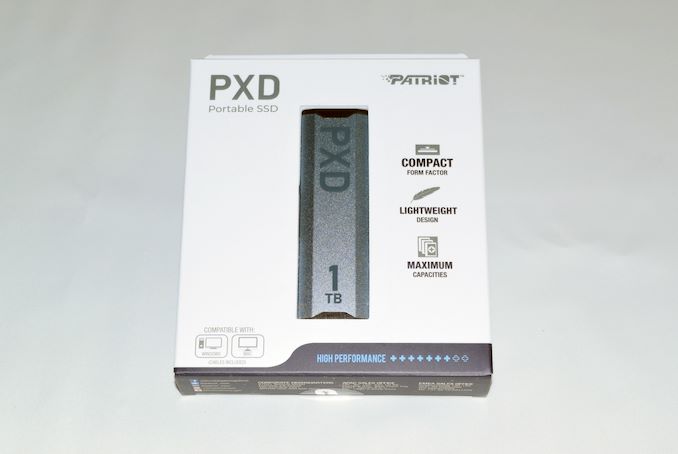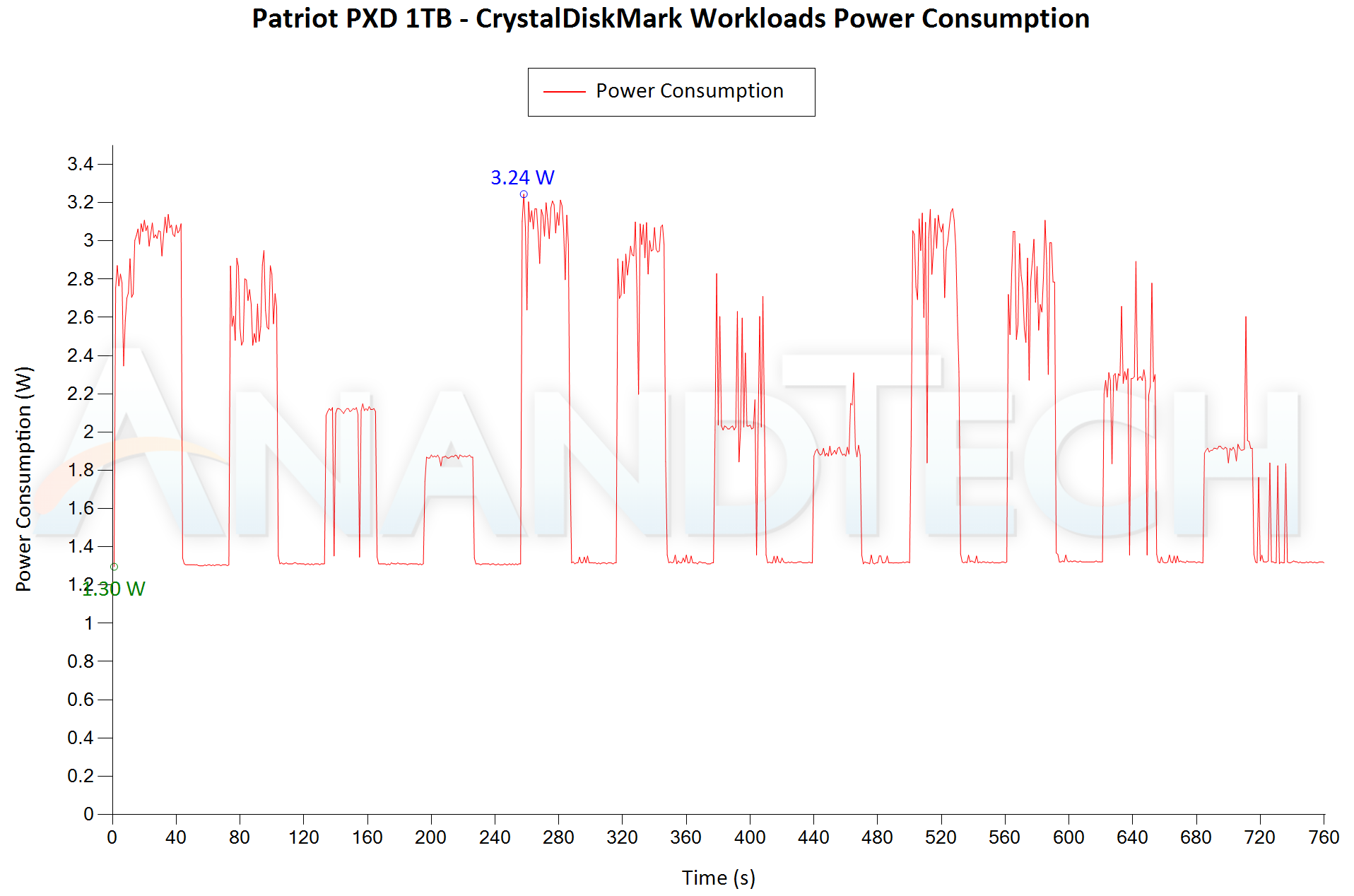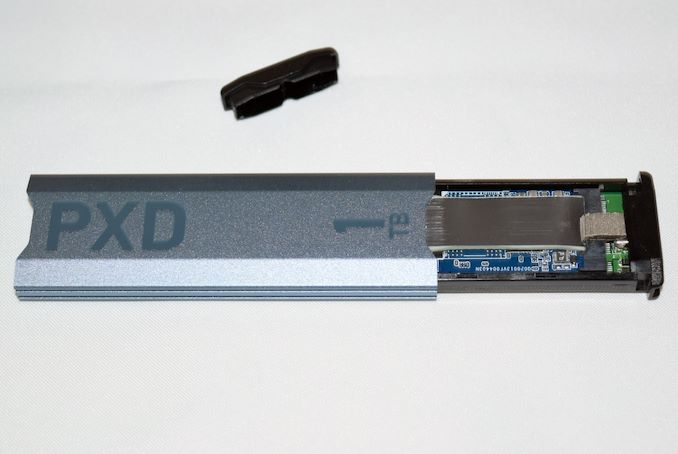
Original Link: https://www.anandtech.com/show/16113/patriot-pxd-1tb-m2-pcie-typec-external-ssd-capsule-review
Patriot PXD 1TB M.2 PCIe Type-C External SSD Capsule Review
by Ganesh T S on September 29, 2020 8:00 AM EST
High-performance bus-powered direct-attached storage units have become very popular, thanks to the advent of high-speed interfaces and technologies such as USB 3.2 Gen 2, NVMe, and 3D NAND flash. Flash manufacturers such as Western Digital / SanDisk, Crucial (Micron), and Samsung produce and market external solid-state drives (SSDs) under their own brand. In addition, manufacturers such as Patriot Memory also buy flash in the open market and bring their own value additions to the external SSD market. Patriot Memory sent over a sample of the PXD external SSD launched in April 2020. This review takes a look at how the unit fares against other options available in this market segment.
Introduction
High-performance external storage devices use either Thunderbolt 3 or USB 3.2 Gen 2 for the host interface. Traditional SATA SSDs (saturating at 560 MBps) can hardly take full advantage of the bandwidth offered by USB 3.2 Gen 2. In the last 18 months or so, we have had a steady number of of NVMe drives behind a USB 3.2 Gen 2 (10Gbps) bridge entering the market.
Patriot Memory had a paper launch of the PXD external SSD back in April, and the units started hitting the market a couple of months after. The PXD has a gumstick form-factor, weighs 35g, and measures 31.5 mm x 103 mm x 9.8 mm. The aluminum body is sandwiched between two plastic tabs. It comes with a single Type-C port and two separate USB 3.2 Gen 2 cables - a Type-C to Type-C, and a Type-C to Type-A, each measuring 30cm.
In this review, we compare it against the following DAS units that we have reviewed before.
- Patriot PXD 1TB
- ADATA SE800 1TB
- Crucial Portable SSD X8 1TB
- HP P700 1TB
- Lexar SL100 Pro 1TB
- Samsung Portable SSD T7 Touch 1TB
- SanDisk Extreme Pro Portable SSD 1TB
A quick overview of the internal capabilities of the storage devices is given by CrystalDiskInfo.
| Drive Power Consumption - CrystalDiskMark Workloads |
 |
The 1.3W idle power consumption augurs well for the usage of the drive with battery-powered devices like notebooks and tablets. The peak consumption is also 3.24W, which is well below the 4.5W guaranteed by almost all USB 2.0 ports.
Pricing
The price of flash-based storage devices tend to fluctuate quite a bit over time. However, the relative difference between different models usually doesn't change. The table below summarizes the product links and pricing for the various units discussed in the review.
| External Flash Storage Devices - Pricing | ||||
| Product | Model Number | Capacity (GB) | Street Price (USD) | Price per GB (USD/GB) |
| ADATA SE800 1TB | ASE800-1TU32G2-CBK | 1000 | $130 | 0.13 |
| Crucial Portable SSD X8 1TB | CT1000X8SSD9 | 1000 | $150 | 0.15 |
| Patriot PXD 1TB | PXD1TBPEC | 1000 | $170 | 0.17 |
| HP P700 1TB | 5MS30AA#ABC | 1000 | $175 | 0.175 |
| Lexar SL100 Pro 1TB | LSL100P-1TBRBNA | 1000 | $190 | 0.19 |
| Samsung Portable SSD T7 Touch 1TB | MU-PC1T0S/WW | 1000 | $190 | 0.19 |
| SanDisk Extreme Pro Portable SSD 1TB | SDSSDE80-1T00-A25 | 1000 | $190 | 0.19 |
At 17c/GB, the Patriot PXD is not the cheapest external SSD in the market. Similar to its performance profile, its pricing also lands it in the lower half of the cost table. But, this is to the advantage of the consumers.
Final Words
After careful analysis of various aspects (including benchmark numbers, temperatures, power consumption, and pricing), it is clear that the Patriot PXD is not the drive to get if raw performance numbers are the only metric. What the drive lacks in performance is more than made up for by its pleasing industrial design, compact footprint, and excellent thermal solution.

Patriot PXD External SSD - Lightweight, but Effective Thermal Solution
In short, if one looks past the comparative performance numbers, the external drive should satisfy the requirements of casual users.







